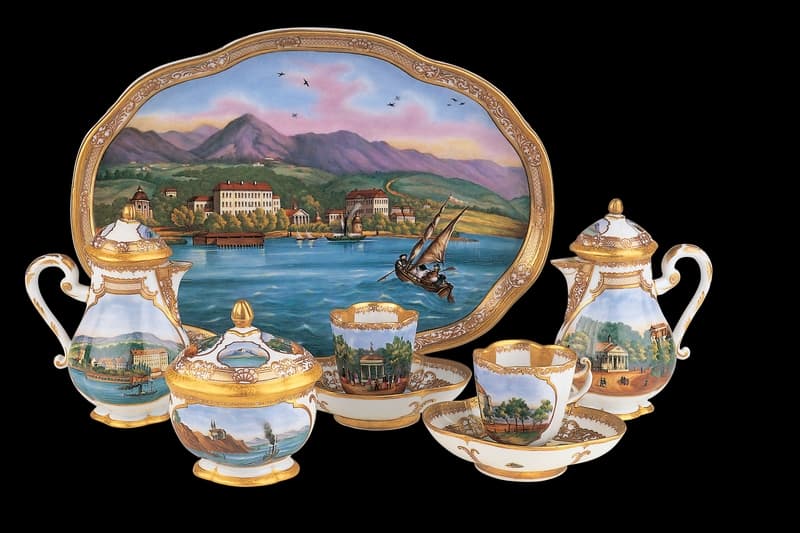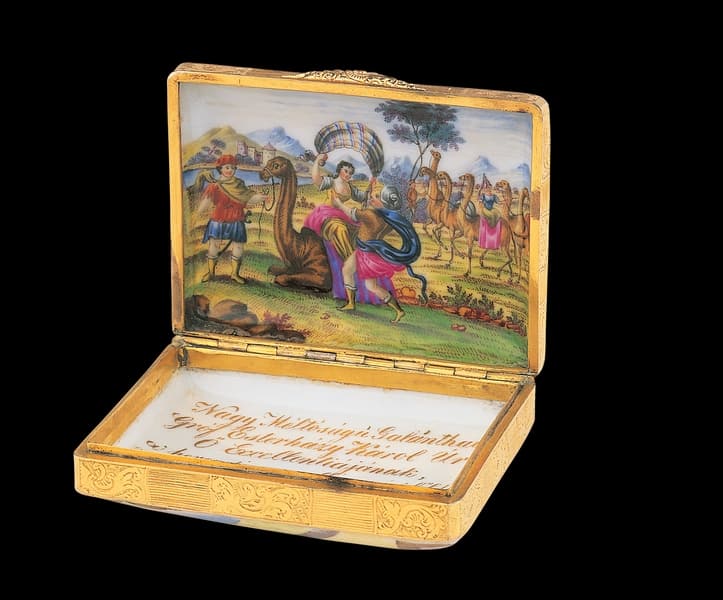Room I.
THE BEGINNINGS
There are no surviving porcelain pieces to show from the first period in the history of the Herend Porcelain Manufactory, founded in 1826- the period under Vince Stingl, from its foundation in 1826 until 1839.
Mór Fischer (1800-1880) is remembered at Herend as the second founder. His life's work over more than thirty years is abundantly represented in public and private collections in Hungary and abroad, especially in the Budapest Museum of Applied Arts and the Herend Porcelain Museum.
Initially, Fischer followed the lead of the Bohemian workshops at the time, making porcelain in Biedermeier and Baroque Revival styles. Then he began to receive orders from Hungarian aristocrats, for replacers for 18th-century table services made by Meissen, Vienna, Sevres, Capo di Monte and other factories.
The first order came from the wife of Count Károly Esterházy, who sought replacers for a Meissen service. Fischer placed his own porcelain mark on these masterly pieces, made in the styles and with the techniques of various other manufactories.
These early orders were decisively important to Herend at the time and still influence its policies today. Instead of making ordinary tableware, the manufactory was able to specialize in handmade porcelain of artistic merit, often calling for special, original techniques.
BALATONFÜRED TABLE SET

This plateau was designed by Mór Fischer in the 1860s. It shows a view of the Lake Balaton resort of Balatonfüred, seen from the direction of Siófok, with the steamer Kisfaludy, the Horváth Mansion behind the harbour, the Round Church and the Heart Hospital. A těte-á-těte (two-person) cabaret service in the Balatonfüred pattern was made as a present for Francis Joseph I and his consort Elizabeth (Sissy), when they were crowned King and Queen of Hungary in 1867.
ORNAMENTAL BOX

Members of the aristocratic Esterházy family were enthusiastic supporters of Mór Fischer. Closest to him personally was Count Károly Esterházy. Sometime in the 1850s, Fischer presented 'the generous patron of the factory' with a portrait of the count painted on porcelain, based on a lithograph of 1845, by Gabriel Decker. Another gift, in 1854, was a decorative étui or box showing various biblical scenes. Inscribed inside in gold are Mór Fischer's words of dedication: 'To His Worship Count Galánthai, Károl Esterházy, His Excellency, the landlord and generous patron of the Herend Porcelain Factory, with deepest respect, the maker, F.M.'

